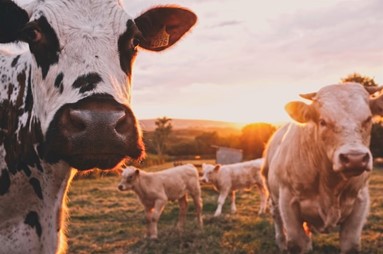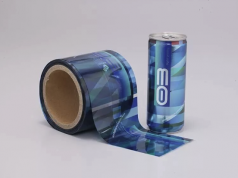Ronald Celio, formerly of Warwick Rhode Island is an entrepreneur and hobby farmer. In the following article, Ronald Celio discusses the principles of regenerative farming, and explores how hobby and commercial farmers alike can benefit from the practice of sustainability.
Regenerative farming is the way of the future for the agriculture industry:
Ronald Celio explains that in broad strokes, regenerative farming is a management philosophy for farmers and ranchers that strives to improve land quality and productivity, animal health and output, farm sustainability, and environmental health.
The practice focuses on rebuilding and revitalizing the soil, enhancing biodiversity, and promoting ecosystem health. Unlike conventional farming methods that rely heavily on synthetic fertilizers and pesticides, regenerative farming is based on a set of principles that prioritize soil health, minimize environmental impact, and promote long-term sustainability.
By harnessing the power of nature and working with the land rather than against it, regenerative farmers are able to create thriving ecosystems that support healthy crops and provide a range of benefits for both the environment and society.
Principles of Regenerative Farming
Ronald Celio, formerly of Warwick Rhode Island says that regenerative farming can mean something a little different to everyone, but there are a few core principles that help define the philosophy and the practices that are employed in its name.
- Minimizing disturbance to the soil
- Maintaining crop cover
- Establishing year-round living rootsCommitting to crop diversity
- Integrating livestock
- Adapting to the needs of the operation
How This Creates Sustainability
The topic of sustainability in regenerative agriculture is one that has a lot of depth. In essence, each principle and practice of this philosophy serves a purpose in improving soil quality and resilience. As regenerative farming improves the ecosystem, the ecosystem becomes more productive for farming and resistant to natural disasters. Each benefit feeds into the next to promote harmony with nature and sustainability on a farm and industry level.
Regenerative Farming Techniques ; Their Benefits
There are a number of techniques that farmers and ranchers can use to improve their operation, and each method comes with its own unique benefits.
Rotational Grazing
Ronald Celio explains that rotational grazing means moving grazing livestock from one field to another on a frequent basis. This allows the land to recover and ensures the animals are always eating high-quality forage. Rotational grazing will help encourage biodiversity of the plant life, sequester carbon, apply natural fertilizer in the form of animal manure, and improve animal health and productivity.
No-Till Planting
Ronald Celio says that no-till planting, sometimes adapted to low-till planting, means planting without disrupting the soil. Soil turnover during tilling releases sequestered carbon into the atmosphere, contributing to climate change, and it also diminishes the resilience of the soil to drought, floods, and erosion. Minimizing or eliminating disruption to the soil will improve soil quality and fertility and reduce the carbon footprint of the operation.
 Chemical-Free Pest Control & Fertilizer
Chemical-Free Pest Control & Fertilizer
Avoiding the use of pesticides and synthetic fertilizers has a number of positive effects for land productivity and the health of the environment. Ronald Celio says that both products contribute to pollution of the air and water, but regenerative practices eliminate the need for them. This also results in money saved for farmers—money that can be put to better uses elsewhere on the farm.
Cover Cropping
Cover crops are ones that are grown in between the cycles of crops grown for commercial sale. These crops grow low to the ground and serve to protect the soil from water and wind erosion. They add nutrients back into the soil that will be used by the next harvest crop, reduce the load of pests, weeds, and diseases, and increase the water capacity of the soil.
Crop Rotation
Ronald Celio says that crop rotation is exactly what it sounds like—planting different kinds of crop in a field, one after the other. Crop rotation will diversify the nutrients left in the soil after harvest, improve the water-carrying capacity of the soil, and increase yields of the next crop planted in the field. Overall, this leads to improved farm productivity and more resilient land.
Scalability of Regenerative Farming
There is no one-size-fits-all approach to regenerative farming, and as a result, it is an easily scaled philosophy that can apply to backyard gardens, single-property homesteads, and large commercial crop farms and ranches alike. Every regenerative farmer matters no matter how large or small the contribution.
Backyard gardeners can employ regenerative practices such as fertilizing with compost to enrich the soil, deter pests with natural remedies like lavender plants or sprays, and avoid digging up the entire garden bed before planting to keep the carbon sequestered in the soil. Managers of homesteads and larger farms/ranches can pick and choose from the practices above depending on what works for their individual property.
Final Thoughts
Ronald Celio explains that the scope of regenerative farming is immense, and its far-reaching benefits will only continue to unfold. It is important to recognize that this philosophy is a journey, and every farmer must commit to it for life.



 Chemical-Free Pest Control & Fertilizer
Chemical-Free Pest Control & Fertilizer


